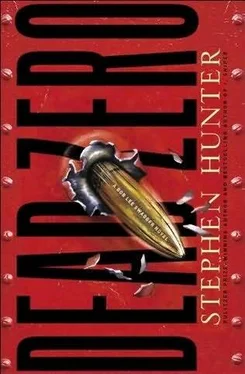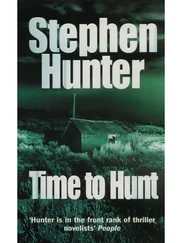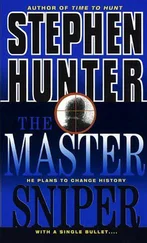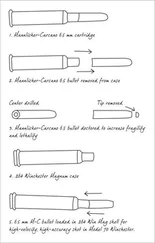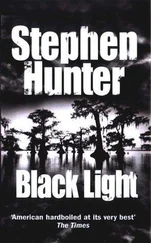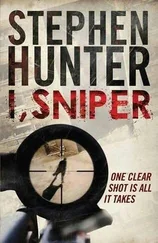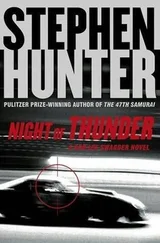“She’s right,” said Nick. “Get him in, let’s get in the gates and see what we get.”
They loaded the squirming old man into the front, wedged between Nick and the stoic Ray. Nick punched the siren again, pulled back, rotated the vehicle to the gate.
“Jesus Christ,” he said as the gate rose, taking an agonizing three seconds. The two uniformed White House cops on duty waved the vehicle by, and it slipped into White House territory, and began to wind on the circle around Executive Drive that would deposit its travelers at the Rose Garden, in the lee of the West Wing extension. The big white mansion, with its curving Harry Truman balcony dominated by vast columns, stood out white and immaculate in the spotlights, but more to the point, through a light screen of trees to the left of the portico, nestled in the crook of the much larger building, a ceremony was clearly transpiring, and a well-illuminated crowd of people could be seen standing before a podium on which stood the distinctive figure of the president of the United States, among other men of power and prestige.
“Stop, stop,” Hollister suddenly cried.
Nick halted the car.
“You have something to say?”
“Look, can we go somewhere and-”
“Yeah, the Rose Garden. That’s the only place we’re going.”
Hollister twisted, in some kind of further existential agony, licked his lips, swallowed hard. Nick looked at him, then turned, dropped the car into gear, and began to ease forward.
“Stop,” the old man said. “Oh Christ, stop.”
Nick looked at his watch. It was almost 7:45.
The thing was scheduled to end at 7:45.
“Talk to us or I will drive us there in ten seconds.”
Hollister swallowed again. Then he said: “They have a missile. It’s a Hellfire.”
ARLINGTON, VIRGINIA
1944.30 HOURS
Behold Hellfire.
It was a stubby thing, six feet long, seven inches wide, painted olive drab. It had tiny, out-of-scale fins, four at the nose, four more at the tail, which looked almost comical against the girth and charisma of the larger thing. In the air it looked like a flying barrel with little cartoon wings, except that it moved too fast for the eye to see, and for the first few seconds, a searing blot of flame so blinded observers it was impossible to make out further details. It was suspended on a much-modified Norwegian launch tripod, welded crudely inside the van’s rear cargo area. It had a translucent nose, where the laser seeker had once been, and immediately behind it a warhead section, with the twenty pounds of a late-industrial-age witches’ brew called PBXN-9 explosive. Detonating upon impact in the Rose Garden, it would surely kill everyone who was within fifty feet of its point of impact, and it would burn, mutilate, blunt-force traumatize and otherwise perforate the many others outside the immediate kill zone. It would kill all the roses.
Then came the guidance section, where so much work had been done; then the pitch gyro to keep it stable in its brief flight; the autopilot electronics package that made sure everything worked when it had to work and in synchronicity, and then the propulsion section, a solid-fuel rocket motor with a three-second burn, from there on controlled by the vanes of its fins, torquing this way and that on computer mandate to bite an atmosphere whistling by at 1.4 mach and guide it to its target. Time in flight from launch to strike would be about seven seconds. Nothing could stop it; no one would see it coming. It would be over almost before it began.
Professor Khalid climbed into the space in the van just under the shaft of the missile, and using a flashlight in his teeth and a sharp knife, cut through the yards of tape that had secured the one-hundred-pound weapon into stability for the long trip. Freeing it, he slid it back on the double rails that were milled into its upper torso on the launch armature until it clicked in place on the launcher housing, and when he heard it click, he knew that the plug on the missile had locked into the socket, establishing communication between the missile and its controls.
Now he had to turn the missile “on.” It was really that primitive, a unit designed for simplicity, to be used under battle conditions in rough situations with time of the essence, as hordes of red T-72s were racing across the Fulda Gap and the NATO missileers would be the ones who had to stop them. This rocket happened to be Norwegian, and had once patrolled the northern NATO defensive perimeter aboard a Norwegian tank-destroyer vehicle.
Khalid went around to the front of the van-a cool breeze refreshed his moist brow as he went and now took from under the rear seat the heart of his improvisations upon the system, the original Norwegian control box, a military-strongbox with cable and a blunt, functional keyboard, ran the cable to the missile launch module, and plugged it in.
“Dr. Faisal, please run your program,” he said, “and make your system checks.”
Faisal came to the device, took out a small disc, found the input slot, and inserted the disc and pushed a certain number of keys. His information, concealed in Norwegian encryption that had taken him months to penetrate, flowed into the central processing unit of the missile. It held but one meaning: not to search for a specifically designated laser coding as the system had been originally designed to do, but for something much more primitive: a unique radio signal. No laser need apply; within the seeker module, behind the lenslike nose aperture, was not a laser seeker but a highly sensitive miniature FM receiver that was prelocked on to a unique frequency and would then only recognize an encoded tone. Old technology but very reliable. It would cause very tiny deviations from the path by sending signals to the servos that controlled the rocket’s fins. As the signal increased with proximity, the servos continued their adjustments. They sought the strongest signal and kept making it even stronger and rode the trolley toward detonation.
Now, at the control box, facing the launch menu in glowing Norwegian, Khalid designated a trajectory: the LOAL-DIR or Lock-On After Launch-Direct mode, meaning the missile would launch blind into the stratosphere at a relatively low angle, and when it found the encoded tone on the designated frequency the CPU aboard would tweak the servos and keep adjusting the angle of attack, then plummet directly to the target on that vector.
And all it would take to-
“We are ready,” he said to Faisal.
Faisal, with a police-frequency scanner purchased from Radio Shack, hunted for the signal. In the space where it should have been was nothing but static. He looked at his watch. It was 7:46:30. Not a noise anywhere on the immediate spectrum.
“Not yet,” he said.
“I wonder how long we can stay here before we are discovered.”
“Where is he? What is going on?”
“Agh,” said Faisal. “To come this far and fail. Aghhh-Allah will not allow it.”
“But will the FBI?” asked the anxious Professor Khalid.
At that point, the Park Services patrol car came slowly down the road to the parking lot.
EXECUTIVE DRIVE
WASHINGTON, DC
1938.12 HOURS
A Hellfire missile,” said Nick, incredulous. A missile? A missile. His mind seemed to fill with torrents of thick sludge as he struggled with the concept.
“It’s Norwegian,” said Hollister. “Came on the black market in Serbia, Zarzi paid for it on behalf of Al-Q. They have two scientists-an Indian rocket guidance expert and an Egyptian software genius-to decrypt it and make some basic changes. Instead of new-fangled laser it homes in on an old-fashioned FM tone at a specific frequency.”
Читать дальше
